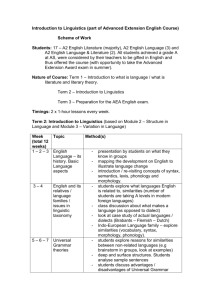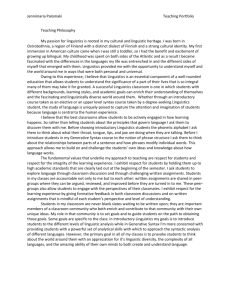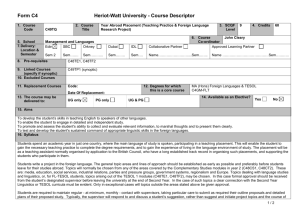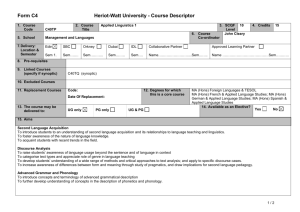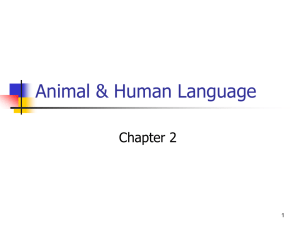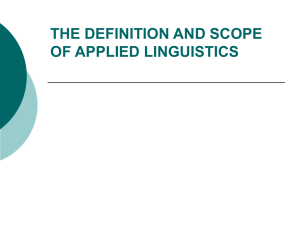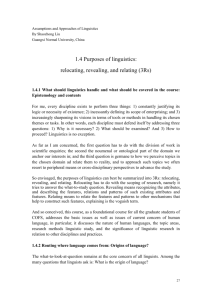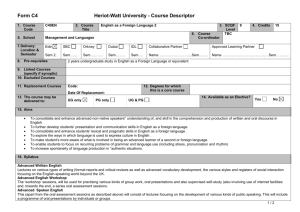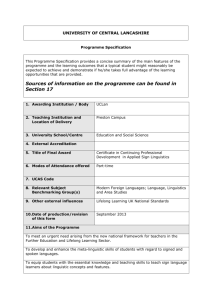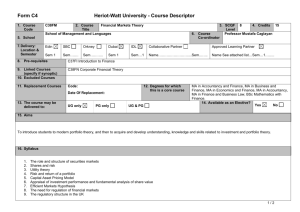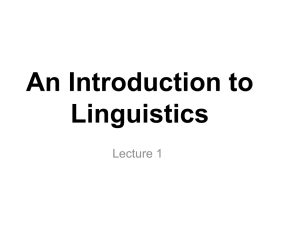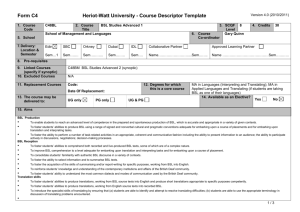C41SD_C4 - Heriot
advertisement
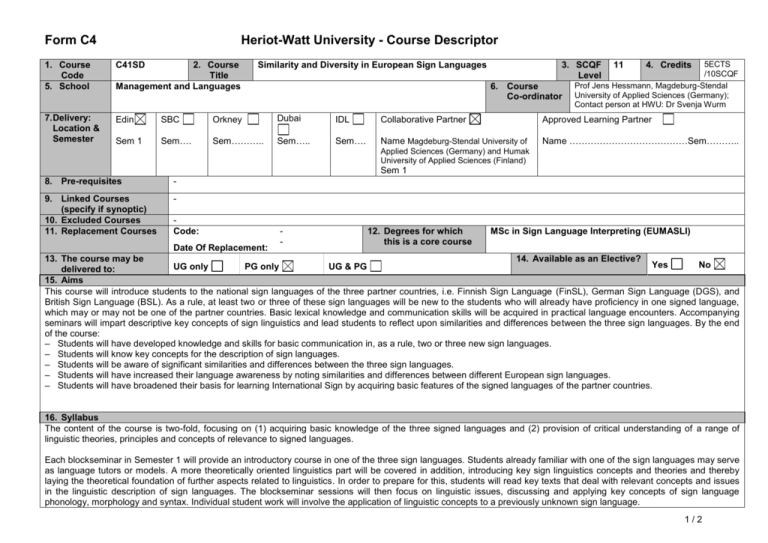
Form C4 Heriot-Watt University - Course Descriptor 2. Course Title Management and Languages Similarity and Diversity in European Sign Languages 5ECTS /10SCQF Prof Jens Hessmann, Magdeburg-Stendal University of Applied Sciences (Germany); Contact person at HWU: Dr Svenja Wurm 1. Course Code 5. School C41SD 3. SCQF Level 7. Delivery: Location & Semester Edin SBC Orkney Dubai IDL Collaborative Partner Approved Learning Partner Sem 1 Sem…. Sem……….. Sem….. Sem…. Name Magdeburg-Stendal University of Name …………………………………Sem……….. 6. Course Co-ordinator 11 4. Credits Applied Sciences (Germany) and Humak University of Applied Sciences (Finland) Sem 1 8. Pre-requisites - 9. Linked Courses (specify if synoptic) 10. Excluded Courses 11. Replacement Courses Code: - 12. Degrees for which this is a core course MSc in Sign Language Interpreting (EUMASLI) Date Of Replacement: 13. The course may be 14. Available as an Elective? Yes No UG only PG only UG & PG delivered to: 15. Aims This course will introduce students to the national sign languages of the three partner countries, i.e. Finnish Sign Language (FinSL), German Sign Language (DGS), and British Sign Language (BSL). As a rule, at least two or three of these sign languages will be new to the students who will already have proficiency in one signed language, which may or may not be one of the partner countries. Basic lexical knowledge and communication skills will be acquired in practical language encounters. Accompanying seminars will impart descriptive key concepts of sign linguistics and lead students to reflect upon similarities and differences between the three sign languages. By the end of the course: – Students will have developed knowledge and skills for basic communication in, as a rule, two or three new sign languages. – Students will know key concepts for the description of sign languages. – Students will be aware of significant similarities and differences between the three sign languages. – Students will have increased their language awareness by noting similarities and differences between different European sign languages. – Students will have broadened their basis for learning International Sign by acquiring basic features of the signed languages of the partner countries. 16. Syllabus The content of the course is two-fold, focusing on (1) acquiring basic knowledge of the three signed languages and (2) provision of critical understanding of a range of linguistic theories, principles and concepts of relevance to signed languages. Each blockseminar in Semester 1 will provide an introductory course in one of the three sign languages. Students already familiar with one of the sign languages may serve as language tutors or models. A more theoretically oriented linguistics part will be covered in addition, introducing key sign linguistics concepts and theories and thereby laying the theoretical foundation of further aspects related to linguistics. In order to prepare for this, students will read key texts that deal with relevant concepts and issues in the linguistic description of sign languages. The blockseminar sessions will then focus on linguistic issues, discussing and applying key concepts of sign language phonology, morphology and syntax. Individual student work will involve the application of linguistic concepts to a previously unknown sign language. 1/2 Form C4 Heriot-Watt University - Course Descriptor Contents will cover aspects such as: – Basic vocabulary and grammar in FinSL – Basic vocabulary and grammar in DGS – Basic vocabulary and grammar in BSL – Sign language phonology – Sign language morphology – Sign language syntax – Linguistic similarities and differences between FinSL, DGS, and BSL 17. Learning Outcomes (HWU Core Skills: Employability and Professional Career Readiness) Subject Mastery Demonstrate a critical awareness of current issues in the area of sign linguistics. Demonstrate a critical understanding of selected theories, principles and concepts in the area of sign linguistics. Use knowledge of and basic skills in communication in, as a rule, two or three new sign languages. Demonstrate critical awareness of significant similarities and differences between the three sign languages. Apply critical analysis, evaluation and synthesis to issues which are informed by developments at the forefront of linguistics. Critically review and consolidate knowledge in the area of sign linguistics Extend signing skills by acquiring basic features of new signed languages. Personal Abilities Communicate, using appropriate methods, to a range of audiences including signed, spoken and written communication. Communicate with peers, more senior colleagues and specialists, using signed, spoken and written communication. Use an appropriate range of software to support and enhance work. 18. Assessment Methods Method Take responsibility for own work. Take responsibility for a significant range of resources. 19. Re-assessment Methods Duration of Exam Weighting (%) Synoptic courses? Method Duration of Exam (if applicable) Coursework & Continuous assessment 20. Date and Version Date of Proposal October 2012 NA Diet(s) (if applicable) 100% Date of Approval by School Committee NA Resubmission of coursework Date of Implementation September 2013 NA NA Version Number 2/2 1.0
